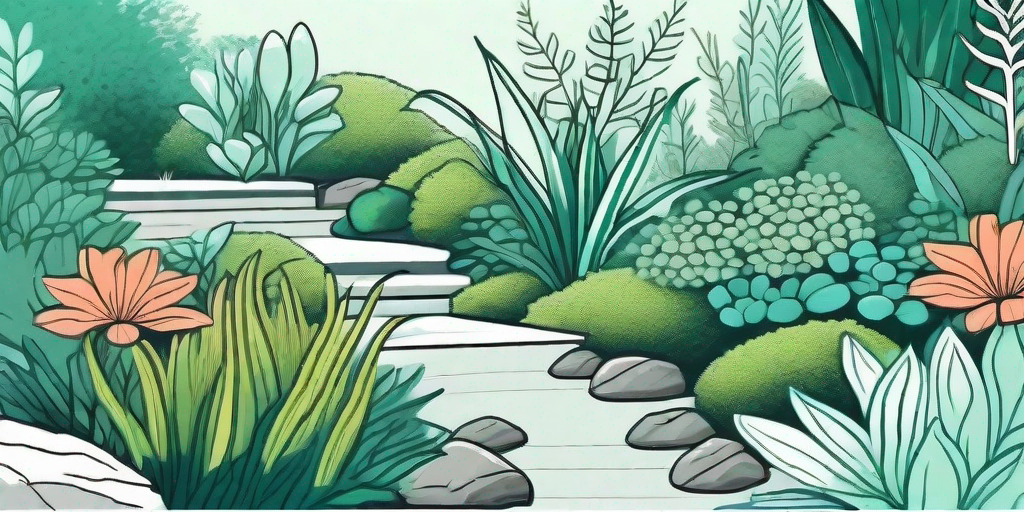
Who would have thought that the secret to a lush and healthy garden could be found underfoot, often overlooked and even more often, unappreciated? Yes, we're talking about moss. This humble, green carpet of nature has been quietly performing miracles in gardens around the world, and it's high time we gave it the recognition it deserves. So, pull up a chair, grab a cup of tea, and prepare to be enlightened about the wonders of moss.
The Magic of Moss
Before we dive into the nitty-gritty of moss gardening, let's take a moment to appreciate the magic of moss. This tiny plant, which often goes unnoticed, has been around for over 400 million years. That's right, moss was here before the dinosaurs, and it's still going strong. Now, if that's not resilience, I don't know what is.
But what makes moss so special? Well, for starters, it's a champion at retaining water. This means that it can help to keep your garden hydrated, even in the driest of conditions. Plus, it's a low-maintenance plant. No need for constant pruning or fertilizing. Just let it do its thing, and watch your garden flourish.
How to Grow Moss in Your Garden
Now that we've established the awesomeness of moss, you're probably wondering how you can get some of this green goodness in your own garden. Well, you're in luck. Growing moss is as easy as pie, and we're about to serve up the recipe.
Step 1: Choose the Right Location
Moss isn't too picky about where it grows, but it does have a few preferences. It loves shady, damp areas, so look for a spot in your garden that fits this description. If your garden is more Sahara desert than Amazon rainforest, don't despair. There are types of moss that can tolerate sunnier conditions. Just be prepared to give them a little extra TLC.
Step 2: Prepare the Soil
Next, you'll want to prepare the soil. Moss isn't a fan of rich, fertile soil. Instead, it prefers compact, acidic soil. To create the perfect moss-growing conditions, remove any debris from the area and compact the soil with a roller or your feet. If your soil is alkaline, you can make it more acidic by adding sulfur or iron sulfate.
Step 3: Plant the Moss
Now comes the fun part - planting the moss. You can either buy moss from a garden center or collect it from nature (just make sure it's legal to do so in your area). To plant the moss, simply place it on the soil and press it down firmly. Then, water it thoroughly and keep it moist until it's established.
Benefits of Moss in Your Garden
Aside from its low-maintenance nature and water-retaining abilities, moss has a host of other benefits for your garden. Let's take a look at a few of them.
Prevents Soil Erosion
Moss has a dense, mat-like structure that helps to hold soil in place. This makes it excellent for preventing soil erosion, especially on slopes or in areas with heavy rainfall. So, if your garden is on a slope and you're tired of seeing your precious topsoil wash away with every rainstorm, moss could be the solution you've been looking for.
Improves Soil Quality
Moss is a natural decomposer, which means it breaks down organic matter and returns nutrients to the soil. This can help to improve the quality of your soil over time, making it more fertile and better able to support other plants.
Provides a Habitat for Wildlife
Moss provides a habitat for a variety of wildlife, including insects, birds, and small mammals. By adding moss to your garden, you can help to support biodiversity and create a more balanced ecosystem.
Common FAQs About Moss
Now that we've covered the basics of moss gardening, let's tackle some of the most common questions people have about moss.
Is Moss Harmful to Other Plants?
Contrary to popular belief, moss is not harmful to other plants. It doesn't steal nutrients from the soil or smother other plants. In fact, it can actually benefit other plants by improving soil quality and retaining moisture.
Can Moss Grow in Sunny Areas?
While moss prefers shady, damp conditions, there are types of moss that can tolerate sunnier conditions. These types of moss are often found in desert or alpine environments, so they're used to a bit of sun. However, they will need a bit more care and attention than their shade-loving cousins.
How Do I Get Rid of Moss in My Garden?
If you have moss in your garden and you don't want it there, the best way to get rid of it is to change the conditions that it likes. This could mean improving drainage, increasing sunlight, or adding lime to make the soil less acidic. However, before you go to war with your moss, consider the benefits it could bring to your garden. You might just find that it's a friend rather than a foe.
Conclusion
So, there you have it. Moss - the secret ingredient for a lush and healthy garden. It's easy to grow, low maintenance, and comes with a host of benefits for your garden. So, why not give it a try? You might just find that it's the missing piece in your gardening puzzle.















